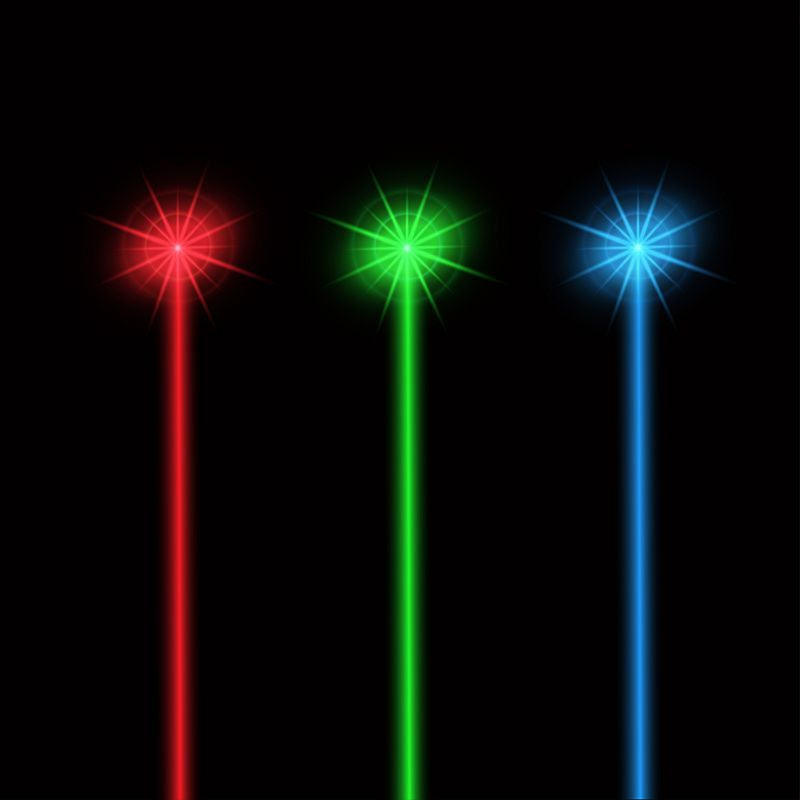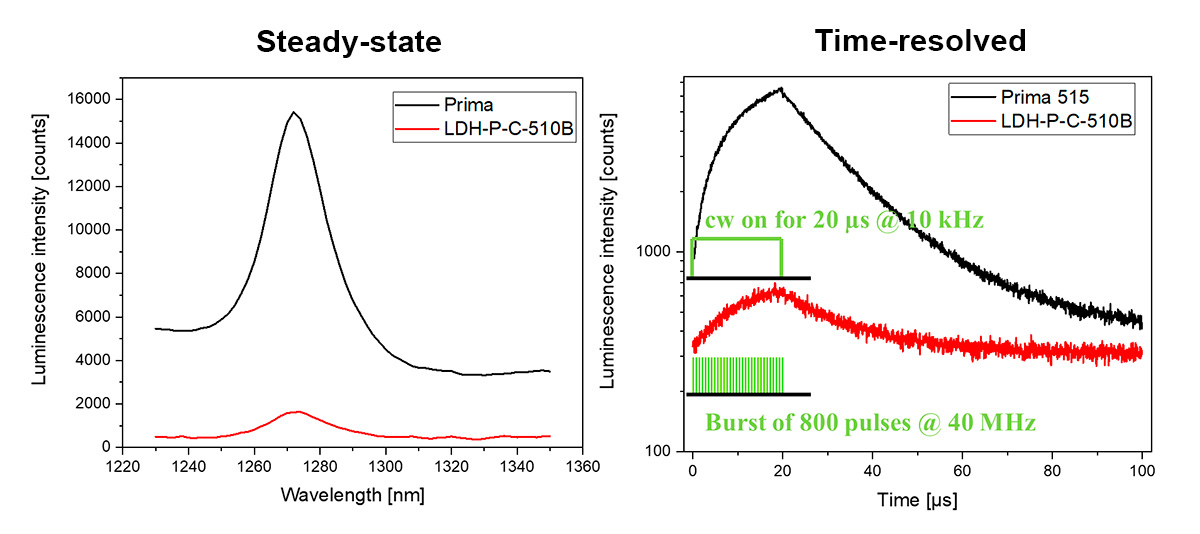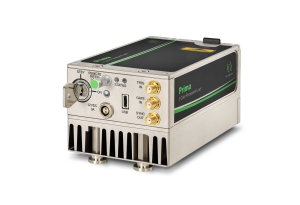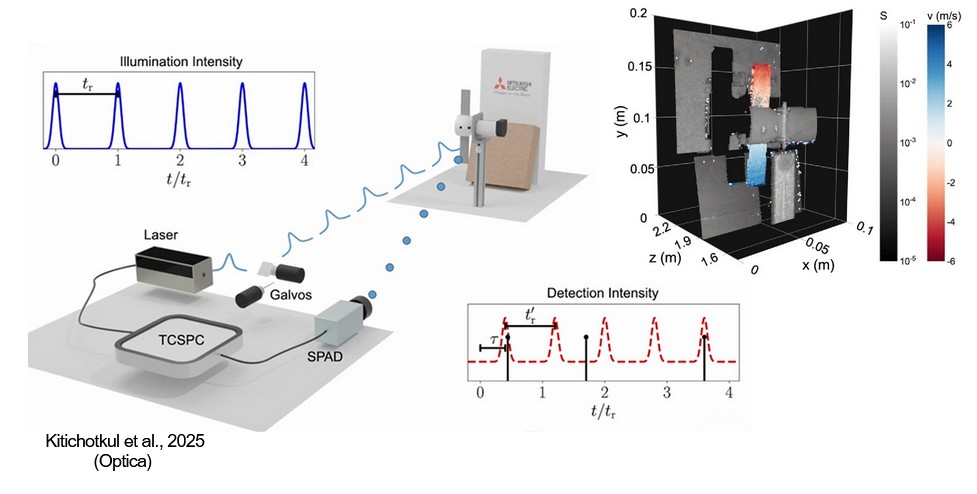Stand-Alone Gain-Switched Picosecond Lasers
Prima
3-Color Gain-Switched Picosecond Laser
- NEW: three colors can be selected at visible wavelength 375, 405, 450, 488, 515, 640 nm
- Compact, stand-alone,affordable
- Pulsed and CW operation, fast CW switching
- Suitable for measuring fluorescence lifetime (ns) and photoluminescence lifetime (µs - ms)
- Triggerable internally and externally, up to 200 MHz
- Fully computer controlled
- SM-PM fiber-coupling is available for combination 450, 515, 640 nm with 35% coupling efficiency
 "We can perform about 90% of our spectroscopy experiments with the three excitation wavelengths provided by Prima. Prima can greatly simplify our optical set-up thanks to its small size and fiber output, which facilitates its use."
"We can perform about 90% of our spectroscopy experiments with the three excitation wavelengths provided by Prima. Prima can greatly simplify our optical set-up thanks to its small size and fiber output, which facilitates its use."
Dr. Alexandre Fürstenberg
Group leader and senior lecturer (MER), University of Geneva
Prima is a solution for researchers who
- need more than one wavelength
- don't have space in the lab
- measure a short decay time (ns) and a long one (µs-ms)
- deal with materials that have a poor luminescence quantum yield
- would like to avoid daily alignment and laser maintenance
 Red, green, and blue: the three most utilized wavelengths
Red, green, and blue: the three most utilized wavelengths
Each colour can be generated individually, one at a time. These wavelengths are the three most commonly used in materials science, chemistry and life science for routine excitation in spectroscopy or microscopy applications to study a wide range of samples, including novel nanomaterials or quantum dots.
Pulsed, CW, and fast switched emission modes
Prima offers full flexibility, enabling you to perform time-resolved or steady-state measurements. Fast CW switching is a smart solution for measuring longer lifetimes in the µs to ms range. It is especially efficient for materials with a poor luminescence quantum yield. The pulsed mode can be driven either internally at selected repetition rates between 100 Hz and 200 MHz or externally, with rates ranging from single shot up to 200 MHz. Moreover, you can combine Prima with other laser diode heads to create even more sophisticated excitation patterns, such as bursts, Pulse Interleaved Excitation (PIE), or Alternative Laser Excitation (ALEX).
General specifications
| Optical out | ||||||
|---|---|---|---|---|---|---|
| Available wavelengths1 [nm] | 375 | 405 | 450 | 488 | 515 | 640 |
| Max pulsed power2 [mW] | 10 | 10 | 10 | 10 | 10 | 10 |
| Pulse duration [ps] | < 130 | < 130 | < 130 | < 130 | < 170 | < 100 |
| Max CW power [mW] | 23 | 50 | 50 | 50 | 50 | 50 |
| Beam dimension3 [mm] | 0.8± 0.30 | 0.8± 0.30 | 0.8 ± 0.30 | 0.8 ± 0.30 | 0.8 ± 0.30 | 0.8 ± 0.30 |
| Beam circularity | typ. > 0.5 | typ. > 0.5 | typ. > 0.5 | typ. > 0.5 | typ. > 0.5 | typ. > 0.5 |
| Polarization | typ. linear | |||||
| Polarization Extinction Ratio (PER) | typ. > 1:10 (> 10 dB) | |||||
| Spectral width FWHM [nm] (pulsed) | < 3 | < 3 | < 4 | < 4 | < 6 | < 2 |
| Spectral width FWHM [nm] (CW) | < 2 | < 2 | < 2 | < 2 | < 3 | < 2 |
| Repetition rates | ||||||
| Internal | ||||||
| Range | User selectable 1 kHz to 200 MHz 1000 increments of 1 kHz from 1 to 999 kHz 200 increments of 1 MHz from 1 to 200 MHz |
|||||
| External | ||||||
| Range | 0 Hz to 200 MHz | |||||
| Trigger level | -1V ... +1V into 50 Ohm | |||||
| Jitter | < 20 ps | |||||
| Connector | SMA | |||||
| Synchronization output | ||||||
| Amplitude | < -800 mV into 50 Ohm (NIM) | |||||
| Connector | SMA | |||||
| Gating | ||||||
| Rise / Fall Time | < 3 ns | |||||
| ON Time Gate | freely adjustable from < 10 ns to 1 ms | |||||
| OFF Time Gate (as a factor of ON Time Gate) |
freely adjustable from 1 to 255 | |||||
| Impedance | 10 kOhms with pull-up 50 Ohms with pull-down |
|||||
| Connector | SMA | |||||
| Dimensions | ||||||
| Size (h x w x l) | 75 x 83 x 140 mm | |||||
| Weight | approx. 1 kg | |||||
| Operation | ||||||
| Temperature range | 10 – 35 °C | |||||
| Rel. humidity | < 80 % (non condensing) | |||||
| Maximum power consumption | < 30 W | |||||
| Interface | ||||||
| PC interface | USB 2.0 | |||||
| Connector | USB-C | |||||
| Operating system | WindowsTM 10 and 11 | |||||
1 Typical value in Pulsed mode. A slight shift to longer wavelengths in CW mode.
2 This is the maximum average power at maximum intensity setting and max repetition rate. A pulse broadening up to 500 ps FWHM is possible at maximum intensity setting.
3 Measured at 1 m distance from laser aperture.

All Information given here is reliable to our best knowledge. However, no responsibility is assumed for possible inaccuracies or omissions. Specifications and external appearances are subject to change without notice.
Turning Vision into Results: Joshua Rapp Explains Why He Chose Prima to Demonstrate Doppler SPL
Can a pulsed lidar system measure not only distance, but also velocity, directly and in real time?
A recent study by researchers at Mitsubishi Electric Research Laboratories (MERL) shows that it can. Using a technique called Doppler Single-Photon Lidar (SPL), they were able to simultaneously estimate distance and radial velocity with remarkable precision. Their setup worked even at high frame rates and in extremely low signal conditions, opening up new possibilities for motion-aware 3D imaging.
Behind this success was a careful choice of hardware. The team needed a laser source that could meet both the precision requirements and the flexibility needed for demanding SPL experiments. That's why they chose Prima.
Joshua Rapp, Principal Research Scientist at Mitsubishi Electric Research Laboratories and one of the authors of the recent study on Doppler single-photon lidar says:
"We originally chose the Prima laser because it had one of the highest repetition rates for pulsed lasers that we could find."
Although their published experiment used a 40 MHz pulse rate, the team selected Prima with long-term goals in mind.
"We did not take advantage of that capability in this paper […] but we have ongoing work that uses pulse rates up to 200 MHz. Having more pulses per second allows us to detect more photons, which improves our estimates."
Another key factor? Wavelength versatility. Prima offers six available wavelengths (375, 405, 450, 488, 515, and 640 nm). Users can select any three, which provides maximum flexibility for adapting to different detectors, samples, or application needs.
"Another reason we bought the Prima is because of the laser wavelengths available, which allows us to choose the wavelength that best suits the problem we are working on. For this paper, we chose the blue laser because the SPAD detector has the narrowest temporal response at shorter wavelengths. However, we could have also used the green or red, where the detector has higher efficiency."
The study itself demonstrates a proof-of-principle for velocity estimation using pulsed lidar – a milestone in SPL research. But its broader relevance goes beyond the lab:
"In a more practical application setting, we probably would need to work in the infrared. But the flexibility of the Prima allows us to develop a good prototype system at reasonable cost."
MERL’s work illustrates how research-grade flexibility in a laser system like Prima can support both fundamental science and applied innovation – especially in emerging fields like photon-efficient, motion-aware lidar.
The Prima 3-Color Gain-Switched Picosecond Laser can be used for various applications. It is the ideal tool for covering most of your daily needs when it comes to exciting a broad range of samples for tasks such as
- Materials Science and chemical research
- Life Science
- Photoluminescence lifetime and Fluorescence lifetime measurements
- Quantum yield measurements
- Time-resolved microscopy and single molecule detection (FLIM, FRET, PIE-FRET, FCS)
The following documents are available for download
- Datasheet Prima 3-Color Gain-Switched Picosecond Laser
- Brochure about PicoQuant's laser products
- Dimention-sheet Prima




 Contact us
Contact us